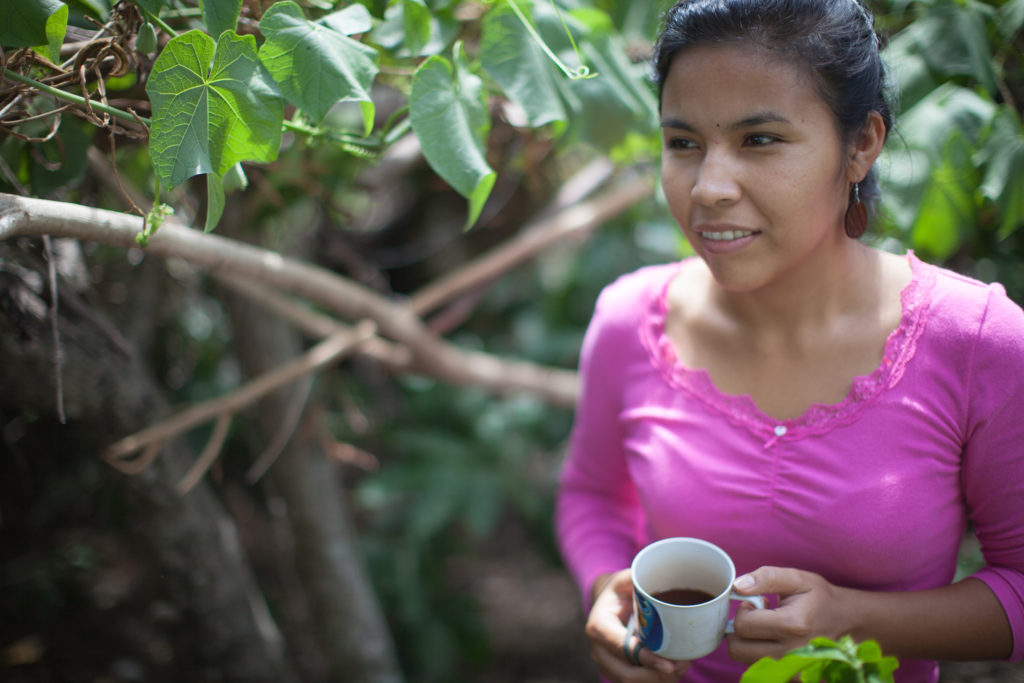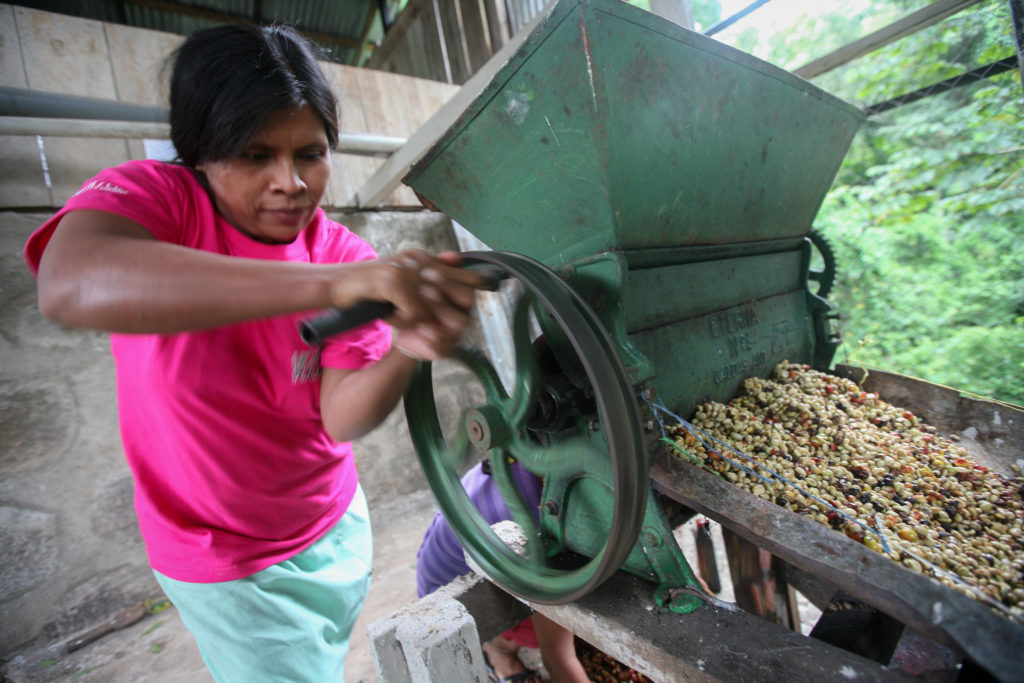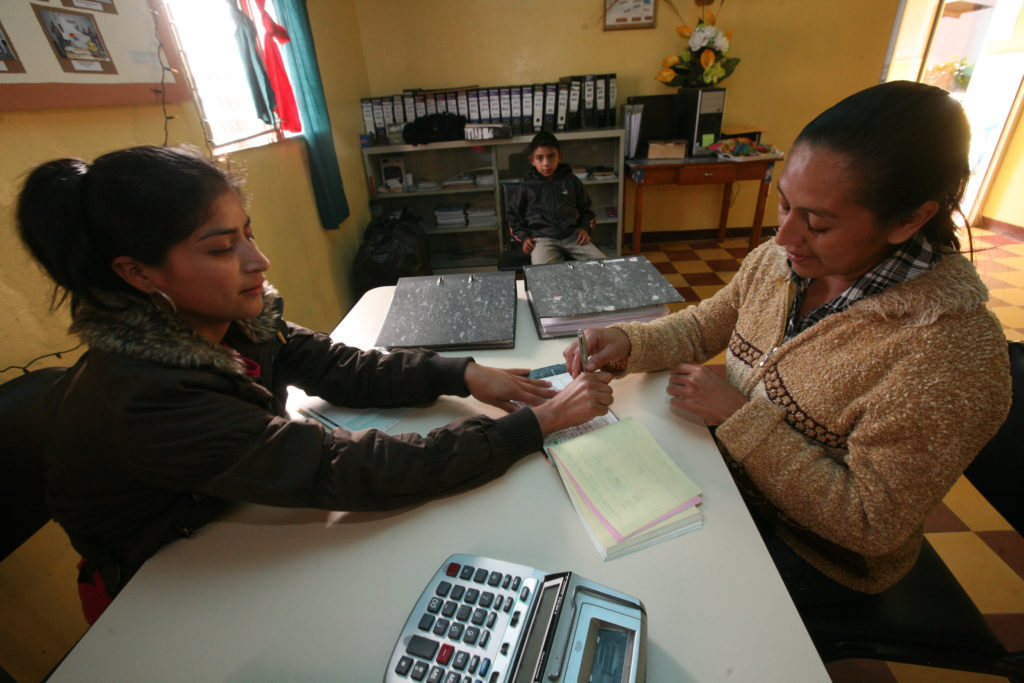
In the highlands of Nicaragua, coffee farms dot the countryside, powering an industry worth nearly $500 million. Coffee is a big business-both in Nicaragua and globally-but it’s driven by small-scale farmers who are finding it increasingly difficult to make a living.
Here’s what it looks like: Lucía’s* family has grown coffee for generations. But what was once a profitable career for her parents, has become increasingly unsustainable. During a recent harvest, Lucía received the equivalent of $57 in exchange for 100 pounds of beans. The problem? It cost her $63 to grow that coffee.
Millions of smallholder farmers like Lucía are losing money for every pound of coffee that they sell. A stubbornly low price for coffee and rising cost of production are trapping farmers in a cycle of poverty. But, through the power of cooperatives, coffee farmers are building their own prosperity.

Lucía is selling her coffee today, but she started growing it three years prior when she purchased coffee seedlings from a neighboring farmer. She planted these on her farm where they grew for three years before beginning to bear fruit. During this time, the coffee was earning her no income, but Lucía had to irrigate her fields, deter pests, and apply costly fertilizer to coax the plant to bloom.
When the time came to harvest those coffee cherries, Lucía had to pay the largest cost yet: labor. The coffee on her farm matures all at once, too much for Lucía and her family to harvest on their own. To compensate, she hires workers from neighboring regions to help pick her coffee, paying their wages and even providing food and lodging.
 A farmer in Nicaragua processes her crops using a coffee mill.
A farmer in Nicaragua processes her crops using a coffee mill.
Using a hand-cranked mill, Lucía processes the coffee to separate the bean from its cherry before finally paying a neighbor to bring her coffee into town, a journey that takes a few hours down rocky mountain passes.
Many of these costs are one-time investments that farmers like Lucia will be paying off for years. Others are invisible: reduced productivity as coffee trees age, risk of crop loss from natural disasters, and the opportunity cost of Lucía and her family’s time-growing another crop, working for a wage in the city, or going to school. These types of expenses are notoriously difficult for any small business owner to track. Smallholder farmers are no different.
 A cooperative employee documents a member’s coffee and pays her for the sale.
A cooperative employee documents a member’s coffee and pays her for the sale.
When her harvest is ready, Lucía is forced to sell her coffee based on the C price, an amount determined on the global commodity market. While Lucía’s cost of production changes based on local conditions in Nicaragua, the C price is influenced by events far away-a good harvest in Brazil, a shipping container shortage, even changes in the price of oil.
Lucía’s costs vary widely from those of another farmer elsewhere, even though both are earning a similar C price. Tariffs and transportation challenges mean that inputs like fertilizer are higher in some countries while poor infrastructure raises the cost to deliver crops to a collection point. But the most important difference is the productivity and scale of Lucía’s farm compared to those in other countries.
In Brazil, farmers tend to land more than twice as large as Lucía’s, benefiting from economies of scale that allow them to cut their cost per pound. These farms are also more productive. A combination of better technology and the environmentally harmful practice of growing coffee in full sun means that a farmer in Brazil might grow triple the amount of coffee per hectare than Lucía.
It doesn’t have to be this way. Coffee cooperatives pool the collective power of farmers like Lucía to cut costs, access premium prices on the international market, and improve livelihoods for farming families.
 Jinotega, Dona Ana y su parcela
Jinotega, Dona Ana y su parcela
With access to financing and business management training, cooperatives grow their purchasing power and forge stronger contracts with international buyers. This earns better prices for their members. In addition, this credit allows the cooperatives to pay their members on time. When farmers like Lucía have cash on hand, they can make critical investments in their farms to boost productivity and cut their cost of production per pound. Cooperatives support this cost cutting with additional services such as training on good agricultural practices or subsidizing inputs like fertilizer or seedlings. These measures help farmers improve their yield per hectare and better their coffee quality.
In the future, cooperatives will be able to go even further as they take control over their own data. Thanks to the next generation of data platforms, coffee enterprises will have the ability to accurately track the cost of production in real time, allowing them to provide tailored training suited to farmers’ individual needs.
Through capacity building and expanding access to finance, Root Capital remains committed to the growth of coffee cooperatives. As we build their resilience, we’re helping farmers like Lucía build their long-term financial health, but it requires the commitment of everyone to ensure that smallholder farmers get their fair share. To learn more about how our friends in the coffee industry are working to get farmers the price they deserve for their coffee, please see below.
Learn more and take action:
- Want to dive deeper into the cost of production and how it’s calculated? Read more from the Specialty Coffee Association.
- Want to see how coffee companies and a nonprofit are taking into account cost of production to ensure coffee farmers in Colombia earn a livable income? Learn more about the Verified Living Income project.
- Want to learn more about how hidden costs mean that farmers are financially sustainable in the short-term, but not the long-term? Read this summary of a study by Fair Trade USA and Cornell University.
- Interested in supporting coffee cooperatives as they cut costs and raise incomes for coffee farmers? Support Root Capital today.
* Lucía is a representative example of a smallholder coffee farmer, not a specific individual.
Photos © Sean Hawkey and Root Capital

